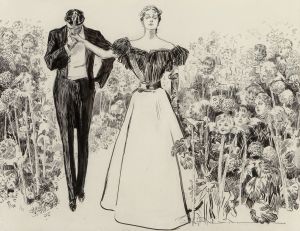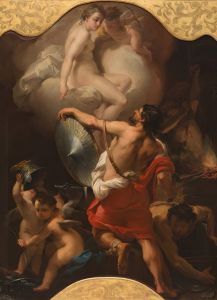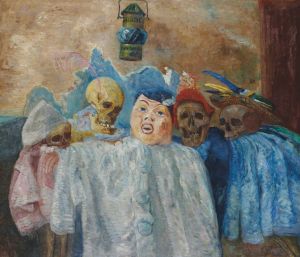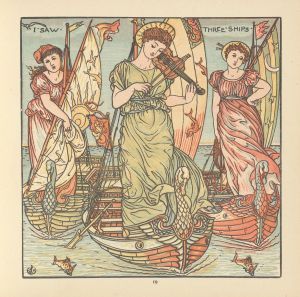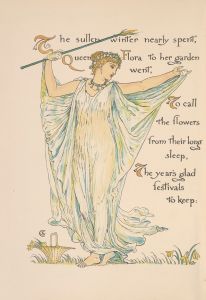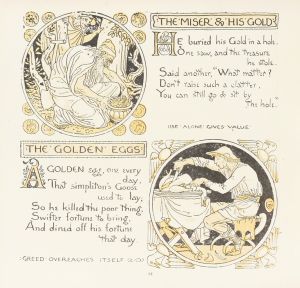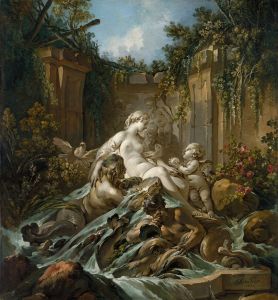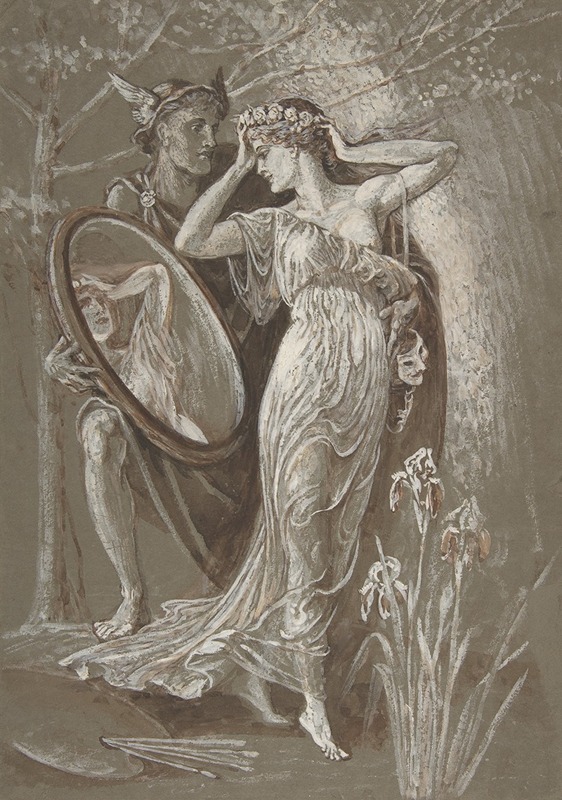
The Mirror of Venus
A hand-painted replica of Walter Crane’s masterpiece The Mirror of Venus, meticulously crafted by professional artists to capture the true essence of the original. Each piece is created with museum-quality canvas and rare mineral pigments, carefully painted by experienced artists with delicate brushstrokes and rich, layered colors to perfectly recreate the texture of the original artwork. Unlike machine-printed reproductions, this hand-painted version brings the painting to life, infused with the artist’s emotions and skill in every stroke. Whether for personal collection or home decoration, it instantly elevates the artistic atmosphere of any space.
Walter Crane's "The Mirror of Venus" is a notable work by the English artist and illustrator, who was a prominent figure in the Arts and Crafts Movement during the late 19th and early 20th centuries. Crane was renowned for his contributions to book illustration, decorative arts, and his involvement in the socialist movement. His works often reflected a blend of romanticism and symbolism, with a strong emphasis on beauty and nature.
"The Mirror of Venus" is an exemplary piece that showcases Crane's artistic style and thematic interests. Although specific details about the painting's creation, such as the exact year it was painted, are not widely documented, the artwork is often associated with Crane's broader body of work that explores mythological and allegorical themes.
In "The Mirror of Venus," Crane draws inspiration from classical mythology, a common source of inspiration for artists of the period. The painting depicts the Roman goddess Venus, known as Aphrodite in Greek mythology, who is traditionally associated with love, beauty, and fertility. The title suggests a scene where Venus is gazing into a mirror, a motif that symbolizes self-reflection and the contemplation of beauty.
Crane's depiction of Venus is consistent with his style, characterized by graceful lines, harmonious composition, and a rich color palette. His work often features intricate details and a sense of movement, which can be seen in the flowing garments and natural surroundings that frequently accompany his figures. The painting likely includes elements of nature, such as flowers or water, which are recurrent themes in Crane's work, symbolizing purity and the organic connection between humanity and the natural world.
As an artist deeply influenced by the Pre-Raphaelite Brotherhood, Crane's work shares similarities with this group, particularly in its emphasis on medieval and classical themes, as well as its attention to detail and vibrant colors. The Pre-Raphaelites sought to return to the abundant detail, intense colors, and complex compositions of Quattrocento Italian art, before the time of Raphael. Crane's "The Mirror of Venus" can be seen as part of this broader artistic movement, reflecting its ideals and aesthetic values.
Walter Crane's contributions to the Arts and Crafts Movement were significant, as he believed in the integration of art into everyday life and the importance of craftsmanship. His work, including "The Mirror of Venus," exemplifies his commitment to beauty and artistic integrity, qualities that were central to the movement. Crane's legacy is evident in his influence on subsequent generations of artists and designers, as well as in the continued appreciation of his work in both fine art and decorative contexts.
While specific exhibitions or collections featuring "The Mirror of Venus" are not extensively documented, Walter Crane's works are held in various museums and galleries worldwide, reflecting his enduring impact on the art world. His paintings, illustrations, and designs continue to be studied and admired for their aesthetic qualities and their role in the evolution of modern art and design.






